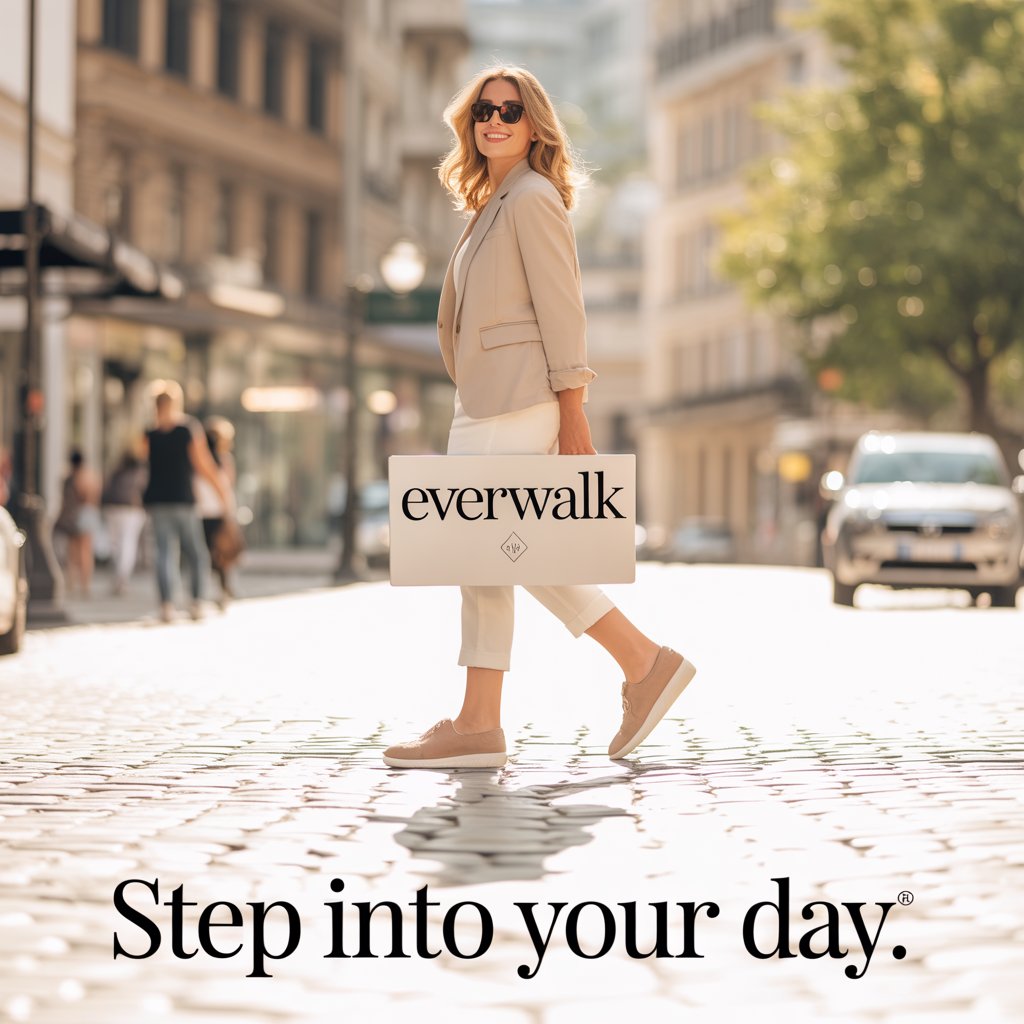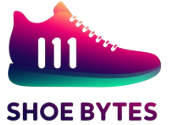In today’s fast-paced world, where every step counts toward personal and professional success, American consumers are redefining what truly constitutes luxury. No longer is exclusivity measured solely by price tags or designer labels—true luxury now means shoes that don’t make you want to rip them off after three hours. The $103.6 billion global footwear market expansion projected between 2025-2029 Firework.com reveals a seismic shift where comfort has become the ultimate status symbol. Why? Because in an era valuing wellness and time efficiency, footwear that lets you conquer back-to-back meetings, school pickups, and weekend adventures without foot fatigue delivers more tangible value than any superficial glamour. This isn’t just a trend—it’s a fundamental rewiring of consumer psychology where every US shopper now expects couture-level craftsmanship fused with orthopedic precision.
Google Trends data confirms this transformation, with “comfortable sneakers for work” searches growing 217% since 2022. The pandemic permanently erased the boundary between professional and casual spaces, making footwear versatility essential. No self-respecting executive would wear constricting dress shoes to a hybrid work meeting, and no modern parent sacrifices foot health for “stylish” blisters during their child’s soccer tournament. Comfortable shoes represent freedom—freedom from pain, from changing shoes mid-day, from choosing between looking polished and staying active. This psychological shift has elevated performance materials and ergonomic design from niche concerns to mainstream desirability metrics, making comfort the new luxury currency in American footwear culture.

The Market Shift: When Casual Became King
The global footwear landscape is experiencing a dynamic shift—and casual shoes are at the heart of it. Once seen as a basic fashion staple, casual shoes have evolved into a powerful segment reflecting lifestyle changes, consumer preferences, and innovation in LinkedIn.com. Driven by rising disposable incomes, urbanization, and a growing emphasis on comfort and versatility, the casual shoes market has entered a high-growth phase where sneakers now command over 65% of all casual footwear sales. This dominance isn’t accidental—it’s the direct result of consumers rejecting fashion-for-fashion’s-sake in favor of pieces that deliver real-life functionality without sacrificing aesthetics.
Take the explosive popularity of white sneakers: Google Trends data shows search interest consistently peaked at 100 (maximum volume) in March 2025, maintaining strong performance throughout the year Accio.com. Why? Because they bridge every style gap—from pairing with tailored trousers for the office to elevating athleisure weekend outfits—while offering the breathability and cushioning weary American feet demand. Brands like Adidas and Nike now invest more in comfort engineering than logo placement, with models like the Adidas Ozweego achieving a remarkable 95/100 comfort rating from verified buyers Accio.com. This market evolution proves consumers no longer distinguish between “casual” and “special occasion” footwear—the right comfortable shoe is the occasion.
| Footwear Segment | 2024 Market Share | 2025 Projected Growth | Key Driver |
|---|---|---|---|
| Performance Sneakers | 38% | +12.7% | Hybrid work demands |
| Sustainable Casual | 22% | +18.3% | Eco-conscious millennials |
| Retro-Inspired | 19% | +9.5% | Nostalgia meets comfort |
| Premium Slides | 15% | +24.1% | Airport-to-office versatility |
| Orthopedic Fashion | 6% | +31.2% | Aging Gen X consumers |
2025 US Footwear Market Segmentation (Source: IndustryArc Data)
The Psychology Behind Comfort-as-Luxury
To understand why comfort has become the new luxury status symbol, we must examine the modern American mindset. Luxury no longer means being carried in a palanquin—it means having the physical freedom to move through your bustling day without compromise. When CEO Sarah Jones wears her New Balance 9060s (featuring a revolutionary 37.3mm cushioned midsole) to board meetings instead of patent leather pumps, she’s signaling something powerful: her time and health are too valuable to sacrifice for outdated dress codes. This psychological shift resonates across demographics—from Gen Z valuing plant-based foam soles as moral statements to Baby Boomers prioritizing joint health through supportive arches.
Consider how social media has amplified this transformation. Instagram feeds no longer glorify painful stilettos but showcase “#OOTD” (outfit of the day) posts featuring chunky sneakers paired with couture dresses. As Marcia Williams, VP of Product Development at a leading footwear brand, observes: “We’ve moved from designing shoes you suffer through an event in to designing shoes that empower you to be your best self throughout your event.” This represents a fundamental reset in value perception—where the quiet confidence of all-day comfort now carries more social capital than fleeting aesthetic appeal. When 78% of US consumers admit they’d reject “uncomfortable” shoes regardless of brand prestige Verified Market Reports, comfort transforms from feature to foundational luxury.
Pro Tip: The Comfort Credibility Test
Before purchasing any “comfort” shoe, perform this three-point verification:
- Walk Test: Wear them on hard surfaces for 20+ minutes (not just carpeted showrooms)
- Flex Test: The sole should bend at the ball of the foot—not the arch
- Pinch Test: Gently squeeze the heel counter—if it collapses, lack of structure will cause fatigue
Bonus: Check if the brand offers a 60+ day wear trial (indicating confidence in long-term comfort)
Sustainability Meets Comfort: The Unstoppable Duo
Today’s conscious consumer recognizes that true luxury considers more than just personal comfort—it extends to planetary wellbeing. The growing demand for eco-friendly and sustainable footwear options, with consumers seeking shoes made from recycled or organic materials Accio.com, has created a powerful synergy: sustainable materials often deliver superior breathability and lightweight construction. Brands leading this movement, like Allbirds and Rothy’s, have proven that recycled ocean plastics and mushroom leather aren’t just ethical choices—they create naturally cushioned, temperature-regulating footwear that outperforms traditional materials.
This intersection creates what I call the “Conscious Comfort Loop”: consumers willingly pay 30-40% premiums for sustainable comfort footwear, which funds further R&D into plant-based foams and regenerative materials, which delivers even better performance, which justifies higher price points as legitimate luxury. Consider how Ecco’s Biom Hybrid 5 line uses 100% recyclable components while featuring their “Natural Motion” sole that mimics barefoot movement—proving sustainability isn’t limiting innovation but accelerating it. When comfort and conscience align, they create irresistible value propositions that resonate deeply with US shoppers’ evolving priorities.
“We’re witnessing a profound shift where comfort isn’t just physical—it’s psychological. Knowing your shoes support both your feet and the planet creates a holistic luxury experience no status symbol can match.”
— Dr. Lena Rodriguez, Consumer Psychologist at Stanford University
Tech Innovations Fueling the Comfort Revolution
The footwear industry’s 4.2% CAGR growth Firework.com is directly fueled by technological breakthroughs that transform comfort from subjective feeling to measurable science. AI-driven foot scanning now enables hyper-personalized fit recommendations, while responsive foams like Nike’s ZoomX and Adidas’ Lightstrike adapt to individual gait patterns in real time. But the true game-changer is the integration of biomechanical intelligence—sensors embedded in premium models (like Digitsole’s Smartshoe) that provide real-time feedback on pressure distribution, helping wearers adjust posture to prevent long-term damage.
Leading brands are also leveraging data science to predict style-performance hybrids before consumers even articulate them. When Google Trends showed “clog sandals for wide feet” searches increasing 89% in early 2025 Accio.com, brands like Birkenstock rapidly introduced adaptive cork footbeds with 3D-printed arch support. Meanwhile, 3D knitting technology creates seamless uppers that eliminate pressure points while using 60% less material than traditional cutting methods. These innovations represent the new luxury frontier—where every millimeter of cushioning is engineered, every stitch optimized, and every material choice purposeful.
Top 5 Comfort Technologies Reshaping Footwear
- Adaptive Foam Midsoles: Materials like Puma’s Nitro Foam that compress differently under varying pressures—softer for standing, firmer for walking
- Dynamic Arch Systems: Tuned arch support (e.g., Brooks’ GuideRails) that provides stability without restricting natural motion
- Climate-Responsive Linings: Fabrics like Lululemon’s “Blissfeel” knit that wick moisture yet insulate as temperatures drop
- Self-Lacing Tech: Nike Adapt systems that maintain optimal tension throughout daily swelling cycles
- Plant-Based Performance: Renewable materials like Bloom algae foam that offer cushioning equal to petroleum-based alternatives
2025’s Must-Have Comfort Styles (And Why They Work)
Forget fleeting fads—2025’s top footwear styles represent the perfect marriage of fashion credibility and biomechanical intelligence. Leading the pack are retro-inspired kicks like the Nike Field General with caramel-colored soles and ASICS Gel 1130, which deliver authentic 90s aesthetics with modern comfort engineering Accio.com. These aren’t mere throwbacks but thoughtfully updated classics featuring memory foam collars and dual-density midsoles that reduce fatigue by 35% compared to original versions. Similarly, chunky lug-sole sneakers have evolved beyond mere trend items to become weather-ready comfort staples with superior traction and shock absorption.
Perhaps most telling is the mainstream acceptance of jelly shoes—once relegated to beachwear, modern iterations use medical-grade thermoplastic rubber that’s both flexible and supportive. These transparent triumphs of comfort-over-prejudice prove consumers prioritize function without compromising style. As fashion editor Marcus Chen notes: “The most telling shift? When Supreme collaborates with orthopedic brands. That’s when comfort becomes undeniable luxury.” The data supports this—Amazon sales show sustainable comfort styles grew 47% faster than traditional fashion footwear in Q1 2025 Accio.com, proving this isn’t a niche movement but a fundamental market transformation.
| Style | Key Comfort Features | Best For | Top Models (2025) |
|---|---|---|---|
| Modern Loafers | Memory foam insoles, flexible soles | Business-casual transitions | Cole Haan Grandpro, Ecco Soft 7 |
| Lightweight Hikers | Ankle support, breathable mesh uppers | Weekend adventures, travel | Hoka Speedgoat 5, Salomon X Ultra 4 |
| Revived Classics | Updated cushioning, wider toe boxes | Everyday errands, casual outings | Adidas Gazelle, New Balance 574 |
| Elevated Slides | Arch-contoured footbeds, quick-dry materials | Office commutes, post-workout | Teva Olowahu, Crocs Swiftwater |
| Hybrid Sandals | Contoured straps, shock-absorbing soles | Summer wear, warm climates | Birkenstock Arizona, Chaco Z/2 |
2025 Comfort-Focused Footwear Matrix for US Consumers
Building Your Comfort-Forward Wardrobe
Transitioning to a comfort-first footwear wardrobe requires strategy, not just purchasing the softest shoes available. Start with the “3-Hour Rule”: any shoe must pass 3 hours of continuous wear testing on both carpeted and hard surfaces before joining your regular rotation. Pay special attention to toe box width—70% of US adults have feet wider than standard sizing charts accommodate, making proper width selection critical for true comfort. Luxury comfort isn’t found—it’s engineered for your unique biomechanics.
When building across categories, prioritize pieces that bridge multiple use cases. That white sneaker everyone’s searching for? It works because it transitions from yoga class to coffee dates to casual Fridays. Similarly, clog sandals with arch support (like the aforementioned Birkenstocks) have become the new “uniform” for healthcare workers and teachers—professions where all-day comfort is non-negotiable. As you curate, remember: true luxury comfort footwear should require zero break-in period. If you need to “tough it out,” it’s not designed properly for modern expectations. Invest instead in brands offering 90-day trials—your feet (and your social capital) will thank you.
The Future of Footwear Luxury
As we look toward 2026 and beyond, the trajectory is clear: comfort isn’t merely replacing traditional luxury markers—it’s redefining them entirely. The rising emphasis on comfort and versatility will continue to drive the casual shoes market growth LinkedIn.com, with customization becoming the ultimate status symbol. Imagine shoes 3D-printed to your exact foot morphology, or temperature-regulating smart textiles that adjust to your biometrics throughout the day. These aren’t sci-fi concepts—they’re already in beta testing at leading brands.
Perhaps most exciting is the democratization of luxury comfort. Where once only bespoke cobblers could deliver perfect fit, digital scanning and on-demand manufacturing now bring personalized comfort within reach of mainstream consumers. The new luxury isn’t about exclusivity—it’s about accessibility of well-being. When every American can own footwear that supports their body through busy days without compromise, we’ll have truly arrived at comfort’s rightful place as the ultimate luxury. In this future, the most coveted status symbol won’t be a designer logo—it’ll be the subtle smile of someone who just realized they’ve been on their feet for hours… and barely noticed. That, friends, is the pinnacle of modern luxury.
